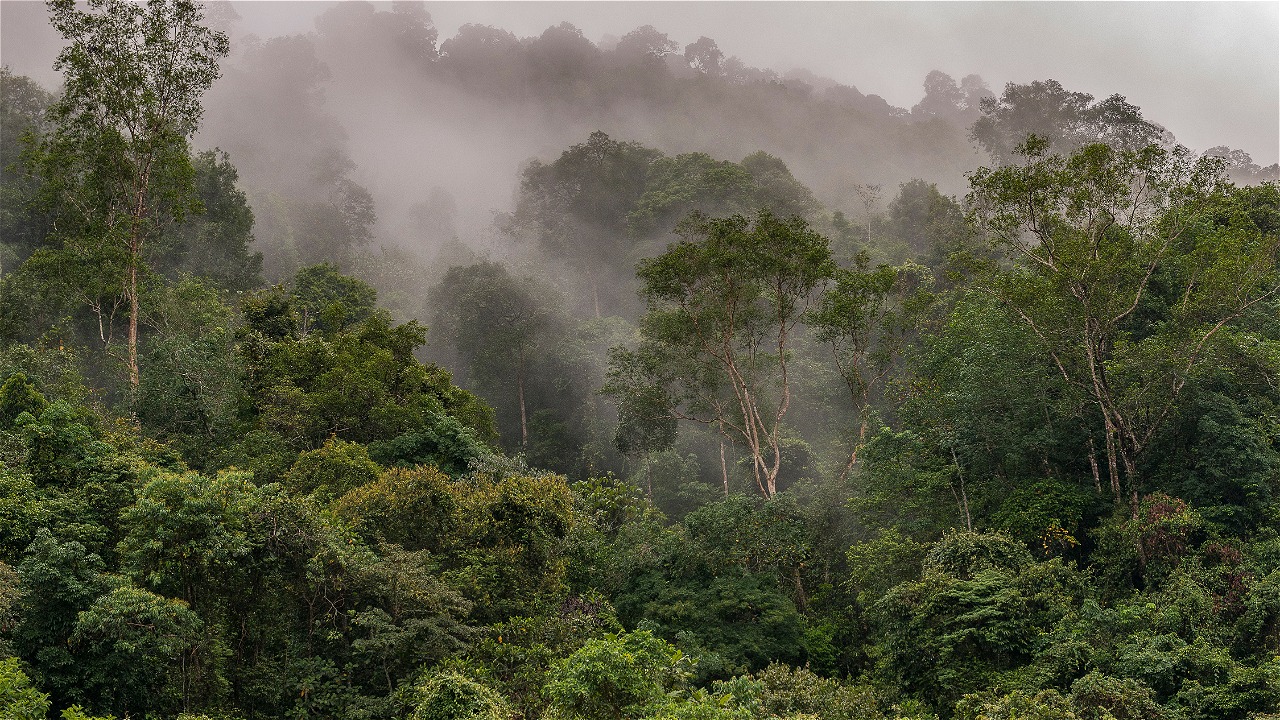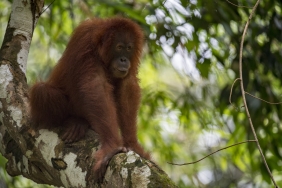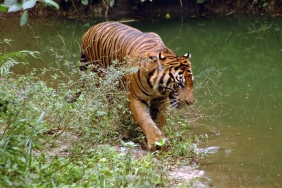SECOND INTERNATIONAL SYMPOSIUM ON WILDLIFE; CONSERVATION OF WILDLIFE, PEOPLE, AND THE HARMONIOUS LIFE OF BOTH
WWF Indonesia together with Riau University and Andalas University held the second International Wildlife Symposium on November 1-4, 2015 with the theme "Wildlife and People: Strengthening Capacity to Promote Harmony". The symposium, held at the Limau Manih Campus of Andalas University in Padang, West Sumatra, aimed to identify challenges in wildlife management in Sumatra and find solutions. Several speakers came from various countries such as the United States, Germany, Denmark and Indonesia who are experts and practitioners in the field of wildlife and nature conservation.
Sumatra is known as one of the most biodiverse islands in the world. It is home to 196 species of mammals, 22 of which are not found on any other island in Indonesia (Rhee et al, 2004). Much research and scientific publications have been produced on the island, but these have not been maximized to support sustainable utilization. Meanwhile, the island's biodiversity is facing serious threats that could even lead to massive destruction or extinction. One of the efforts that can be made is to strengthen all parties to be able to contribute and be integrated in saving the natural wealth of this island and even wider.
One of the efforts that can be made is to strengthen all parties to be able to fully contribute and be integrated to save this island. Therefore, one of the concrete initiatives is to hold the 2nd International Wildlife Symposium which is expected to encourage more people to care and engage with current issues related to biodiversity in Sumatra and on a wider scale, as well as to increase the capacity and integration of each party involved in wildlife conservation. The first symposium was successfully held at Riau University on November 3, 2014.
Responding to the importance of wildlife conservation efforts, Dr. Ardinis Arbain from Andalas University stated that "All living things have the same right to life therefore, this symposium is expected to be a strong foothold for the harmonization of wildlife and humans."
In line with Dr. Ardinis Arbain, Dr. Sunarto from WWF - Indonesia added "We need to strengthen the relationship with wildlife and nature". In addition, he also emphasized the importance of scientific information "There has been a lot of scientific research generated from Sumatra Island but it is still not integrated and provides information to each other so that it is not optimal to achieve harmony between humans and wildlife for sustainable management of Sumatra's natural resources."
Sumatra is home to four critically endangered mammals: the Sumatran tiger (Panthera tigris sumatrae), Sumatran elephant (Elephas maximus sumatranus), Sumatran rhino (Dicerorhinus sumatrensis), Sumatran orangutan (Pongo abelii). Deforestation and fragmentation of natural wildlife habitats have led to human-wildlife conflicts that cause losses on both sides. In 2012, the ecosystem-based spatial planning of Sumatra Island was established through Presidential Regulation number 13, but this effort still falls far short of preventing them from pressure and extinction threats.
This symposium is also expected to be a buffer harmonization between humans and important components such as the presence of wildlife, water catchment areas, threats to the area into important considerations in sustainable spatial planning. Sunarto, WWF-Indonesia species expert stated, "The active involvement and synergy of academics, experts and conservationists in providing scientific information-based input to the government in harmonious spatial planning." In addition, it is hoped that this symposium can also reveal various important information on wildlife.
"Understanding the past, studying the present, and predicting the future of wildlife is very important," said Dr. Andreas Wilting, a wildlife genetics expert who was also a keynote speaker.
At this symposium, 56 research abstracts were collected and presented consisting of various research objects and wildlife conservation activities ranging from mammals, plants, reptiles/herpetofauna, fish, aves, and biodiversity. In addition, the symposium also featured two units of local camera trap designs made in Indonesia funded by WWF - Indonesia. The symposium was also attended by more than 200 people from various countries.
It is also hoped that the wider community will understand that conservation efforts are not easy.
"Conservation works when local communities see the value and benefits," said Dr. Aletris M. Neils, a carnivore expert from the University of Arizona who was one of the keynote speakers.
It is hoped that this symposium can disseminate conservation issues to a wide audience. As a concrete action, in this symposium series, a field visit was also held to find out the success and problems of conservation in the Nyarai Valley and Pariaman Turtle Conservation Center.
The wildlife symposium is expected to become an annual agenda as a medium for exchanging information among academics, researchers and conservationists in order to produce important recommendations for the sustainability of wildlife and ecosystems.





